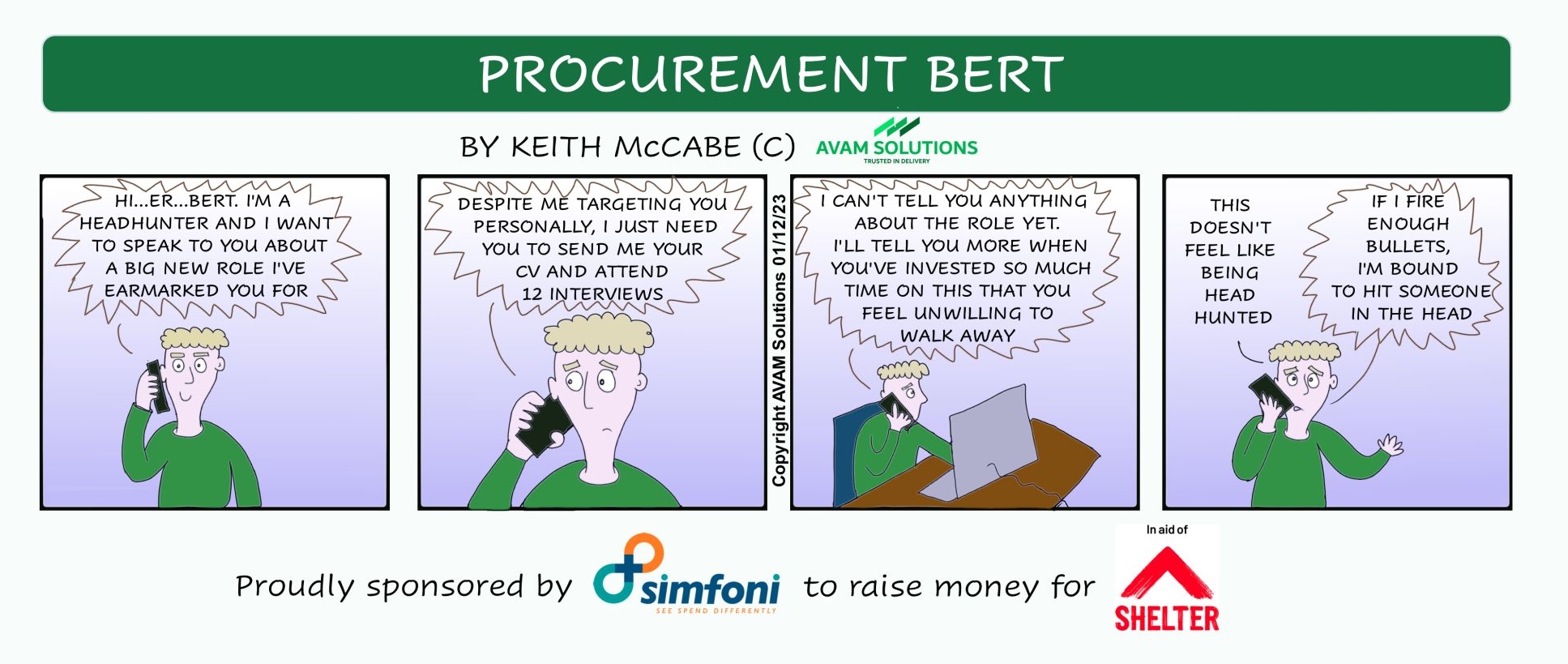Table of Contents
It’s no secret that companies are realizing the benefits of digitizing their procurement function, particularly as teams are under increasing pressure to do more with less. The efficient management of procurement processes and workflows can be valuable contributors to strategic growth and can even help companies gain a competitive edge in their respective industries.
At its core, procurement software automates purchase cycles, brings structure and insight to complex processes, improves operational productivity, and helps identify areas to reduce or better manage costs. When layered with recent advancements in machine learning and artificial intelligence, procurement software can provide your business with a wealth of analytics around your spend – helping to improve the speed and agility of your procure-to-pay process.
With many providers touting new “bells and whistles”, it can be overwhelming to determine what solution is right for you. This is a fairly common problem as every business has different needs and priorities when it comes to managing procurement. The first step when selecting a procurement software provider is to understand the available options so you can be sure it will help you and your team reach your strategic digital procurement goals and objectives.
Procurement software tends to fall into two main categories: ‘Best-of-Breed’ and the larger ‘Suite’ solution providers. And recently, a new category known as ‘Alt-Suite’ has emerged.
And this is where we begin our assessment. Which category is right for your company?
The Contenders: Best-of-Breed, Suite, and Alt-Suite
Best-of-Breed Overview
“Best-of-breed” technology is a term in the tech community that refers to individual solutions that are distinguished within a specific area. They are highly specialized and focused on a specific function or niche within the procurement process (e.g., Simfoni offers best-of-breed solutions for spend analytics, eSourcing, and tail spend management). Typically, these platforms are the best of their type on the market. Highly flexible and adaptable, they’ll integrate well with other platforms and modules, and are an optimal choice for many different types of businesses.
These specialized, low-code solutions are easy–to–implement, easy to manage, and specifically designed to deliver the outcome you need.
Suite Overview
Suite solutions are intended to provide all (or most) of your procurement function capabilities in one software package. Because these solutions offer a wide array of capabilities and a cross-range of functions, many procurement teams have turned to these solutions with the expectation of them solving all of their unique procurement challenges. The truth is, even the most robust procurement suite has its limitations. A company could easily invest hundreds of thousands (if not millions) of dollars in a centralized suite, only to be disappointed when its features are not as robust as desired in certain areas. A suite may seem like the best choice at the outset, but when it doesn’t fit the company’s specific needs or produce the desired outcomes, the question becomes ‘how do we fill in the gaps?
The Rise of “Alt-Suite” (i.e., Composable Procurement Solutions)
Spend Matters recently coined the concept of an Alt-Suite solution, which combines the most elite of the best-of-breed category (often alongside an existing suite solution) to drive targeted outcomes and capabilities for the procurement organization. In other words, alt-suite is your veritable “dream team” of procurement software. Your solution is comprised of the best of the best solutions for each function of procurement, and tailored to your organizational needs in order to deliver the outcomes you desire.
Pros and Cons of Best-of-Breed
Best–of–breed solutions have gained increasing momentum, and for good reason. Here are some of the key features and advantages of a best-of-breed solution, like the one(s) offered by Simfoni:
- Flexibility / Scalability. Because of the low-cost, low-code nature of best-of-breed solutions, you have the flexibility to scale up or scale down as needed. For example, when you start out with one or two users, you can grow as necessary without having to invest in extraneous resources upfront. As your supply chain grows, you can scale your solution accordingly without limitation.
- Speed / Agility. With best-of-breed solutions, you can implement and launch quickly – which means you can start achieving outcomes almost immediately while being agile enough to quickly address any business needs that may have unexpectedly shifted. For example, Simfoni offers category specific intelligence dashboards that blend internal/external data sources that allow the user to get quick, actionable intelligence that can be used to capitalize on new savings opportunities as they arise.
- Focus. Each piece of your best-of-breed will focus entirely on its specific function. For users grappling with achieving a wide range of outcomes from a single suite solution, a best-of-breed solution can be easily deployed and managed alongside your existing suite solution – helping to fill in the gaps while ensuring targeted outcomes are achieved.
- Easy UX. Best-of-breed solutions require less training, offer faster implementations, and will often come with a dedicated support team to ensure you are achieving outcomes quickly, rather than expending your own time (or your teams time) administering complex systems to seek out savings opportunities.
- Security. With best-of-breed, a breach may only occur with one module, making the breach easier to contain and eradicate. This is important because with a suite solution, your entire application is easily compromised, and trying to fix it can be cumbersome.
Best-of-breed is clearly a standout choice, but everything has its disadvantages. Some cons of best-in-breed software include:
- Multiple application dashboards. Because you’re using separate applications to perform different tasks, it’s up to you to organize and centralize your data and dashboards. Providers like Simfoni can help ensure you have clear insights into ALL your spend data – regardless of where or which system the data resides in.
- Multiple vendors. With multiple, integrated, best-of-breed solutions (different modules from different software companies), you’ll have to manage relationships with more than one software provider. Some best of breed providers, like Simfoni, offer composable modules to ensure you have the functionality you need, when you need it, without having to contract with multiple vendors.
- Multiple sign-ins. With multiple best of breed applications from multiple providers, chances are your teams are going to have multiple systems and logins to manage. But with Simfoni single sign-on, you can get access to all the functionality required with a single User ID.
- Missing the Breadth of Suite Solutions. Because suite solutions offer such complex functionality for core source-to-pay processes, many feel there is no other choice but to implement and maintain a suite solution in their procurement technology stack. As we discussed earlier, more than likely there will be some gaps. Fortunately, many best-of-breed solutions offer out-of-the-box functionality that ensures a seamless integration with your existing suite solution.
Pros and Cons of Suite Solutions
While best-of-breed can be an excellent choice, suite solutions do have their advantages and could be a better fit for some businesses. Some of the possible advantages of suite solutions include:
- Deep, Complex Functionality. Suite solutions offer intricate functionalities to help manage the entire lifecycle of your procurement process, from sourcing to contract management. As long as the right platform is chosen based on your organization’s needs and you have the right team to manage its many components, a suite solution can be a valuable asset.
- Integration. Most suite solutions have built-in integrations that allow for easy data transfers between applications in the suite, while best-of-breed solutions may require additional integration work between modules.
- Single vendor relationship. Instead of signing into multiple platforms and juggling different vendors, there is only one login and one vendor in a suite.
If juggling fewer applications and vendors are your top priorities, a suite solution may be for you. However, the downsides of using a suite include:
- Administration. Suite administration requires dedicated expertise and resources to deploy and manage the solution on an on-going basis. As one Simfoni customer explained of their suite user experience: “I felt like I was in the cockpit of a 747 with no instruction manual.”
- One-size-fits-all approach. As we discussed at the start – Suite solutions are very good at providing basic core source to pay functionality required for any large enterprise organization. However, a centralized suite is not a good fit for every organization. Evaluating your needs and the outcomes you want to achieve is always a good place to start.
- Substantial Investment. Deploying a suite solution requires a significant up front and ongoing investment. Businesses can feel stuck or locked into using a suite solution, even when it’s not delivering, because of the exorbitant costs.
- Outcome Limitations. While big procurement technology is ideal for companies that only want to deal with one vendor, it fails to deliver on many key features, such as deep spend analytics that pulls data from across various systems and locations, and optimizing an approach toward tail spend management.
- Adaptation problems. Suite solutions may not adapt well to real-world scenarios. Every company has unique needs and requirements, so a suite solution that is designed for a large enterprise may not be the right fit for your company. For example, it might not have the built-in rules you need to handle complex bidding situations, or you might want to address your tail spend only to discover that suite solutions do not address that specific need.
- Watered-down Capabilities. A suite can have lackluster capabilities in a specific area or could be missing features that are essential to your business needs. Some suites have limited functionality in certain areas because they prioritize the needs of larger organizations rather than smaller companies.
- Higher stakes. “We apologize for the technical inconvenience, we are working to resolve this issue” doesn’t cut it with enterprises that depend on their tech all day every day, nor is it convenient for a company of any size. Relying on a single vendor for your end-to-end technology stack adds an additional layer of risk that can introduce more downtime and negatively impact your business.
- Failure to address. Suite software falls woefully short in certain areas of procurement that many organizations deem as essential, such as the aforementioned tail spend management, as well as category management and analytics.
Alt-Suite Solutions: A Superior Option?
Like suite solutions, alt-suites are comprised of individual modules coming together to form a collective unit. However, unlike traditional suites, alt-suites are designed with an outcome-focused approach that still allows companies to mix and match best-of-breed solutions for the various needs of their procurement strategy. And because it’s modular, it can still work seamlessly alongside traditional suite solutions. Some additional benefits of composable procurement technologies, or alt-suite platforms include:
- Built by experts within each category, thus highly specialized to meet individual needs.
- Modules can be easily swapped out and updated over time without impacting the functionality of the entire system.
- Comes with best-in-class customer service.
Increasingly, we’re seeing companies that had defaulted to a suite solution turning to alt-suites to regain the specialization capabilities of best-of-breed while retaining the ability to keep their procurement modules centralized.
Conclusion
Hopefully you’ve gained insight into the three types of procurement software currently available: Best-of-Breed, Suite, and the newcomer, Alt-Suite, which is rapidly transforming the procurement software industry by offering companies composable solutions that suit their specific needs under one digital roof. As procurement continues to evolve into a critical business management function, alt-suite is certainly one to watch, as it’s currently the one type of solution that has the primary outcome as its key focus—along with customer satisfaction.
Build a procurement solution that fits your needs. Simfoni offers alt-suite solutions with an outcome-based approach to payment, so your investment essentially pays for itself.











